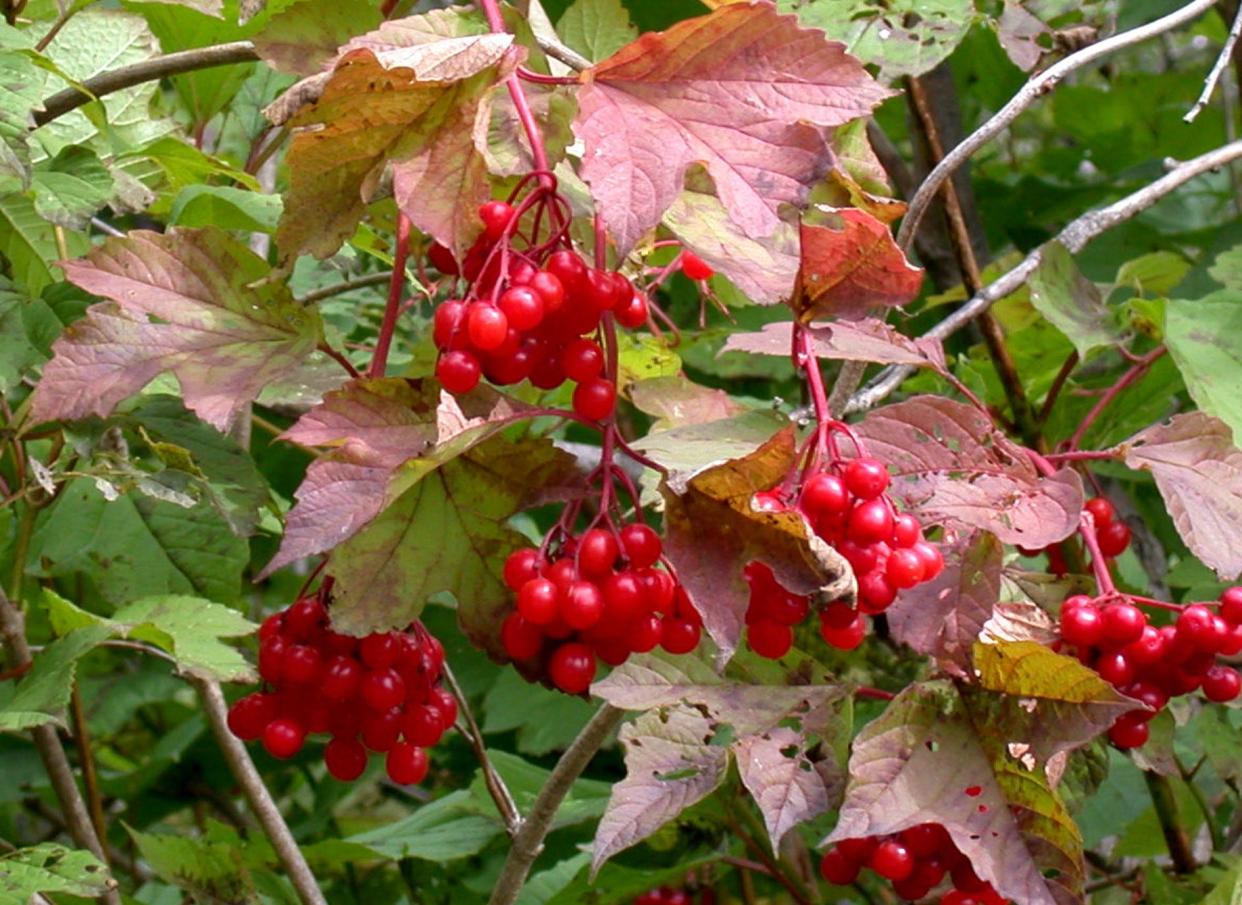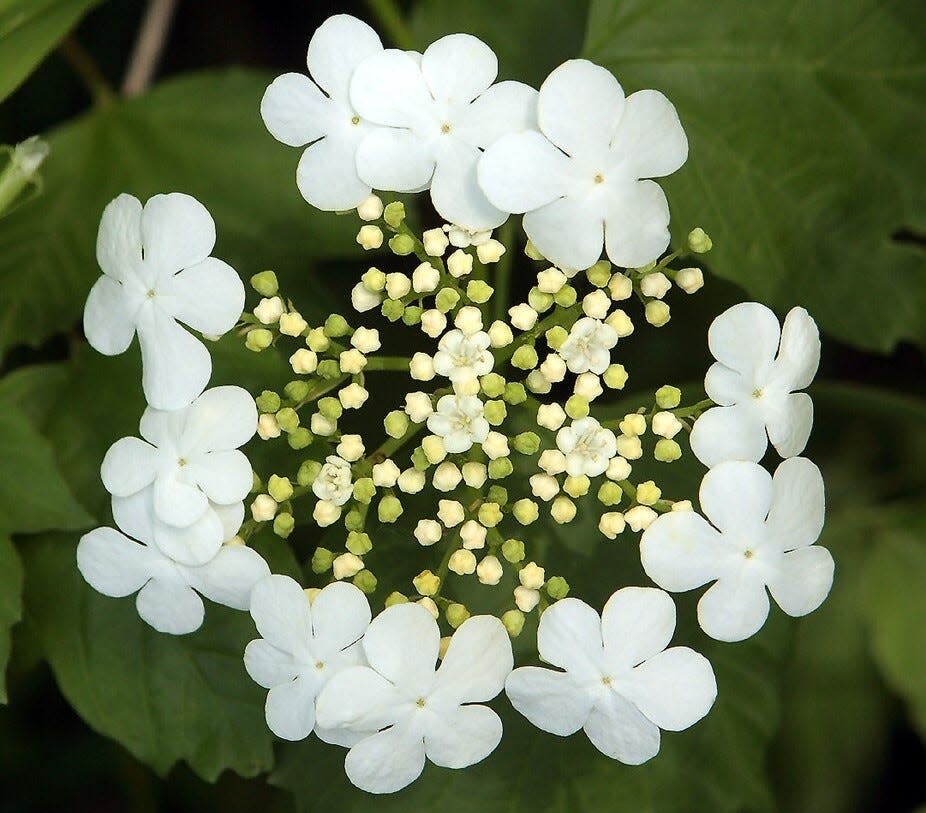Native Plant: American cranberry bush bears fruit for wildlife and humans, too

Editor’s note: Once a month. OSU Extension Master Gardener volunteers in Franklin County profile a plant that occurs naturally in Central Ohio.
With four seasons of interest, Viburnum opulus var. Americanum (formerly known as Viburnum trilobum) produces lacy white flowers in the spring and early summer that give way to red berries that remain from late summer to winter. Also known as the American cranberry bush, this native deciduous shrub will grow in moist to wet soil with well-drained loams in areas with partial shade to full sun. Although it thrives in these conditions, it can survive in poorly drained soil as well, as long as the soil is not in drought.
Sowing wild oats: Native Plant: Northern sea oats provide visual interest year-round
This large, hardy shrub has a moderate growth rate of 1-2 feet per year, reaching 8-12 feet high, and up to 10 feet wide. To keep it from getting larger than desired, an annual pruning just after flowering can maintain the present size.

The leaves of the American cranberry bush are opposite, three-lobed, and dark green, and look like maple leaves. During autumn, the leaves often change to a brilliant yellow-red or red-purple color. They are most easily distinguished by their somewhat wrinkled surface with impressed leaf venation. The bloom period occurs from late April to July, when white lace-like flowers appear with outer rings of large florets surrounding an inner ring of smaller florets.
The berries, which ripen in September and October and remain throughout the winter, resemble cranberries but are almost translucent when ripe. They are an oblong red drupe, roughly half an inch long and wide, containing a single flat, white seed. They soften and sweeten over winter and are excellent in jams and jellies. Plants begin to produce fruit at approximately 5 years of age.
Yahoo for wahoo!: Native Plant: Colorful Eastern wahoo shrub feeds insects and birds year-round
The American cranberry bush is an essential food source for wildlife including songbirds, gamebirds and small mammals. The fruit of the shrub is consumed by many birds such as cedar waxwings, robins, and hermit thrushes. It also serves as a host plant for the larvae of butterflies and moths, especially the spring azure (Celastrina ladon). The white flowers attract pollinators when in bloom.
Growing Conditions
Hardiness Zones: 2, 3, 4, 5, 6, 7
Sun: part shade to full sun
Water: moist to wet soil
Soil: clay, loam, sand
Maintenance: low
Propagation: rooted cuttings or layered stems; transplants easily.
Pests and diseases: Viburnum leaf beetles feed on the leaves and may completely defoliate the plant. The shrub can survive injury; however, repeated damage can kill the plant.
This article originally appeared on The Columbus Dispatch: Native Plant: American cranberry bush offers food for wildlife, humans

